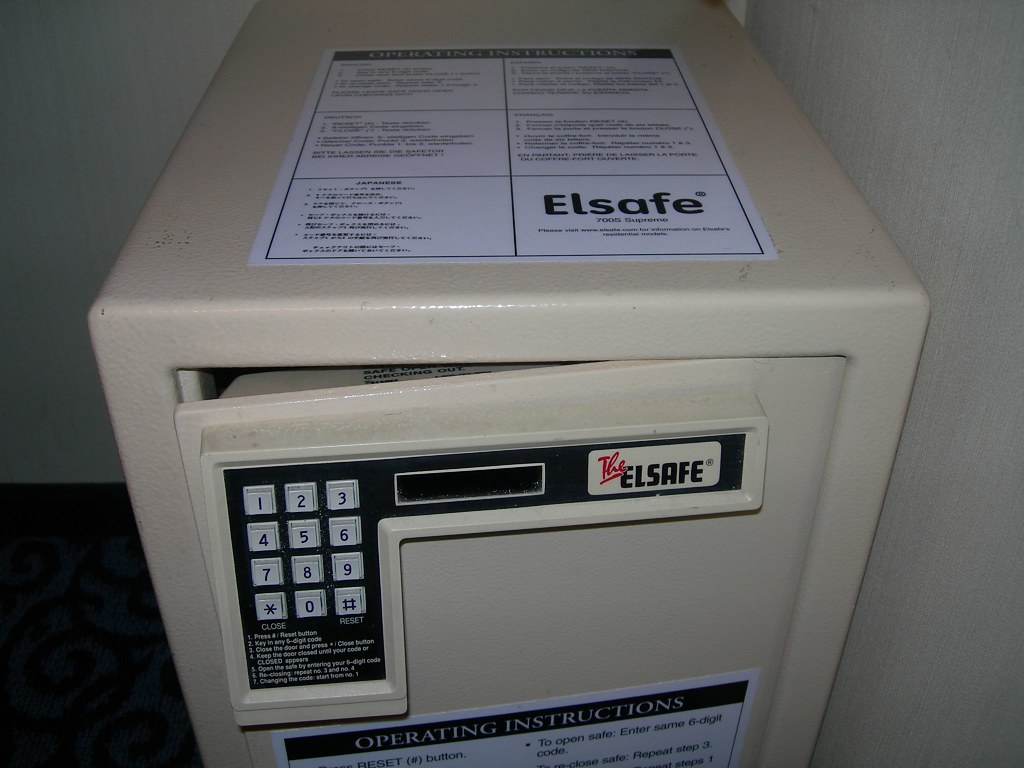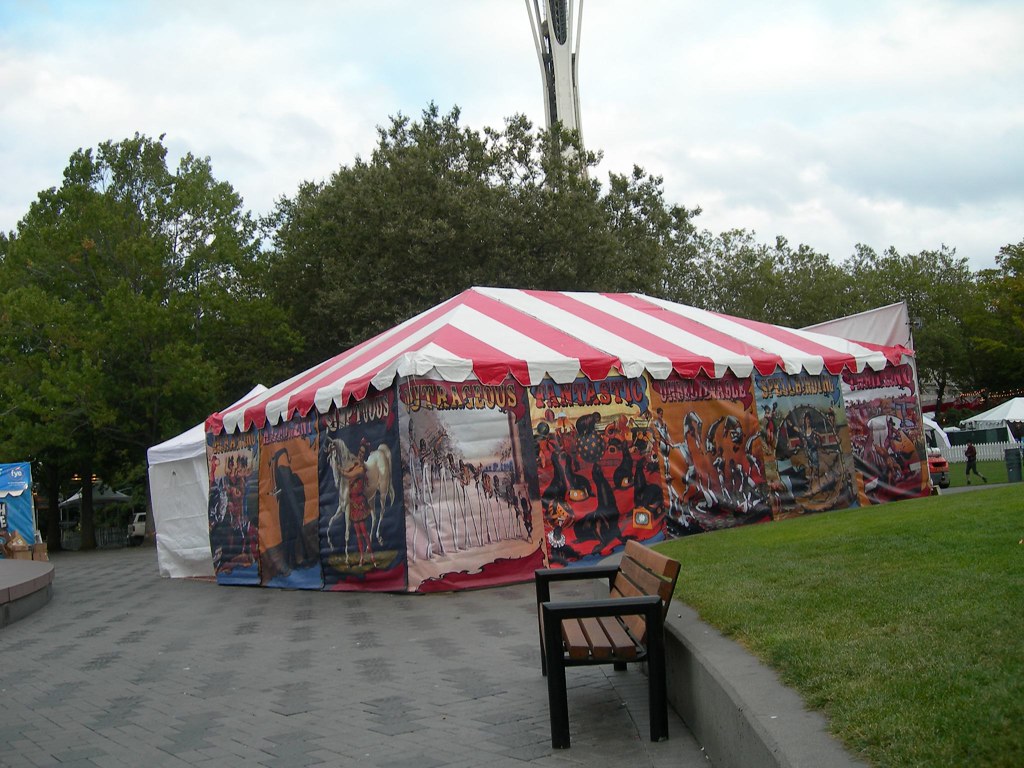

A collection of random thoughts, rants, raves and trivia.
That reflexive gesture — reaching into your pocket for the answer — tells the story in a nutshell. Mobile phones can store 500 numbers in their memory, so why would you bother trying to cram the same info into your own memory? Younger Americans today are the first generation to grow up with go-everywhere gadgets and services that exist specifically to remember things so that we don't have to: BlackBerrys, phones, thumb drives, Gmail.

Whatever you name these people related problems, they’re more likely to cause you trouble on your next assignment than all the design, implementation, and methodology issues you’ll have to deal with. In fact, that idea is the underlying thesis of this whole book: The major problems of our work are not so much technological as sociological in nature.
Page 4
During single-minded work time, people are ideally in a state that psychologists call flow. Flow is a condition deep, nearly meditative involvement. In this state, there is a gentle sense of euphoria, and one is largely unaware of the passage of time: “I began to work. I looked up, and three hours had passed.” There is no consciousness of effort; the work just seems to, well, flow. You’ve been is this state often, so we don’t have to describe it to you.
Page 63
Steady-state production thinking is particularly ill-suited to project work. We tend to forget that a project’s entire purpose is to put itself out of business. The only steady-state in the life of a project is rigor mortis.
Page 10
These would be reasonable approaches if you were in the fast food business (or any production environment), but you’re not. The “make a cheeseburger, sell a cheeseburger” mentality can be fatal in your development area. It can only serve to damp your people’s spirits and focus their attention away from the real problems at hand. This style of management will be directly at odds with the work.
Page 7
The human capital invested in your work force also represents a ton of money. If your company employs a few thousand knowledge-workers, it could easily have enough invested in them to be the equivalent of a modern wide-body aircraft. Wasting the time of that huge investment is money poured down the drain.
Page 221
Fragmentation is particularly injurious when two of the tasks involve qualitatively different kinds of work habits. Thus, the mix of a design task (which requires lots of immersion time, relative quiet, and quality interaction time with a small group) with a telephone support task (which requires instant interruptibility, constant availability, quick change of focus) is sure to make progress on the more think-intensive of these tasks virtually impossible. The time wasted continually trying to get restarted is perceived only as frustration by the worker. You may never hears about it, because the people who suffer form this problem are all too likely to blame themselves.
Page 220
When electronic mail was first proposed, most of us thought that the great value of it would be the saving in paper. That turns out to be trivial, however, compared to the saving in reimmersion time. The big difference between a phone call and an electronic mail message is that the phone call interrupts and the email does not; the receiver deals with it at his or her own convenience. The amount of traffic going through these systems proves that priority “at the receiver’s convenience” is acceptable for the great majority of business communications.
Page 73
More important than any gimmick you introduce is a change in attitude. People must learn that it’s okay sometimes not to answer their phones, and they must learn that their time – not just the quantity but its quality – is important.
Page 74
It is natural that the telephone should have reshaped somewhat the way we do business, but it ought not to have blinded us to the effects of the interruptions. At the least, managers ought to be alert the effect that interruption can have on their own people who are trying to something done. But often, it’s the manager who is the worst offender. One of the programmers in the 1985 Coding War Games wrote on his environmental survey, “When my boss is out, he has his calls switched to me.” What could the manager have been thinking? What was going on in the mind of the systems department head who wrote this in a memo:
“It has come to my attention that many of you, when you are busy, are letting your phone ring for three rings and thus get switched over to one of the secretaries. With all these interruptions, the secretaries can never get any productive work done. The official policy here is that when you’re at your desk you will answer your phone before the third ring….”
Page 72
Today’s modular cubicle is a masterpiece of compromise: it gives you no meaningful privacy and yet still manages to make you feel isolated. You are poorly protected from noise and disruption; indeed in some cases, sources of noise and disruption are actively piped into your space. You’re isolated because that small lonely space excludes everyone but you (it’s kind of a toilet stall without a toilet). The space makes it difficult to work alone and almost impossible to participate in the social unit that might form around your work.
Page 86
Back to brainstorming mode: we began looking for “Six Things You Can Do to Make Team Formation Possible.” It was still hard. At last, in desperation, we tried a trick called inversion, described in Edward deBono’s Lateral Thinking. When you’re stuck trying to solve a problem, deBono suggest that rather than looking for ways to achieve your goal, look for way to achieve the exact opposite of your goal. This can have the effect of clearing away the brain’s cobwebs that keep you from being creative. So instead of looking for ways to make team formation possible, we began to think of ways to make team formation impossible. That was easy.
Page 133
These motivational accessories, as they are called (including slogan mugs, plaques, pins, key chains, and awards), are a triumph of form over substance. They seem to extol the importance of Quality, Leadership, Creativity, Teamwork, Loyalty, and a host of other organizational virtues. But they do so in such simplistic terms as to send an entirely different message: Management here believes that these virtues can be improved with posters rather than by hard word and managerial talent. Everyone quickly understands that the presence of the posters is a sure sign of the absence of hard work and talent.
Page 178
Sharon knew what all good instinctive managers know: the manager’s function is not to make people work, but to make it possible for people to work.
Page 34
I went on a interesting voyage of discovery with this book. I must have been blind twenty-five years ago. Blinded with personal problems, with fatigue and with the necessity of spending those incredibly hard hours shooting Star Trek, the series. I was fairly oblivious to the drama going on around me, oblivious to the people who composed the family of Star Trek, and like some beast of burden, eyes fixed to the furrow, I plowed on -- despite any distraction. And so it was illuminating, twenty-five years later to wend my way back along the path of an experience that I had almost forgotten. It was a joyful passage, and also a sad one.
SLUT -- Streetcar's unfortunate acronym seems here to stay
By KERY MURAKAMI
P-I REPORTER
There's a story going around South Lake Union, but a spokeswoman for Vulcan, Paul Allen's development company, says it's just an urban legend.
That aside, the story that the neighborhood's streetcar line now under construction was called the South Lake Union Trolley until the powers that be realized the unfortunate acronym -- SLUT -- seems here to stay.
Officially, it's now the South Lake Union Streetcar. But the trolley name already has caught on, and in the old Cascade neighborhood in South Lake Union, they're waiting for the SLUT.
... More
SEATTLE — Today, in response to a Transport Canada airworthiness directive (AD), Horizon Air initiated the inspection of the landing gear of its Bombardier Aerospace Q400 turboprops. To allow sufficient time for the inspection process and the reaccommodation of customers whose travels are being affected, Horizon announced it will be making additional flight cancellations through Friday.However, I think the Seattle PI owes them an apology for this article.
The AD was produced in the wake of two landing gear failure incidents involving SAS-affiliated airlines in Europe. Horizon, which has operated the Canadian-manufactured Q400 since 2001 and now has 33 in its fleet, has never experienced any issues like those SAS recently encountered.
Horizon today canceled 120 flights out of its daily average of 500. Horizon is canceling 127 flights on Thursday, and those will appear in central reservations systems by 5:30 p.m. today.
It seems like the reporter worked really hard to find some upset passengers, but most satisfied with the airline's response. The found only one person who was really upset.
Each Q-400 airplane holds 74 to 76 passengers. Because of the planes' relatively small size, a Sea-Tac spokesman said, the cancellations did not create mass confusion at the airport.
But the 23-year-old, who visited Seattle on vacation, voiced concern that her Horizon ticket agent told her only that flights were canceled -- without giving a reason. Reporters at the airport gave her details.
"Now they're having flight problems?" she said, asking if other Horizon Q-400 aircraft would fly on Wednesday.
"I don't feel comfortable. I think they should explain it to people."

Look sir you’re not going to tell me that! Everyone knows stories! I just told you I slept in the same bed as my wife every night for the last fifteen years in the same bedroom of the same flat in the same suburb of Tokyo – and look at all you different people! You just have to tell me how you travel to work every morning in the place where you live and for me it’s a fable! it’s a legend! Sorry I am tired and a little stressed and this is not how I usually talk but I think when you are together like this then stories are what is required.
Page 7
‘It’s a scintillating world; it’s a pyramid of mercury: and we have to be standing on top.’That’s one of the best descriptions of a treacherous balancing act that I’ve seen in a long time. I can see the poisonous material sliding out from underneath.
Page 159
‘For you the present is easy to discern because it is simply where memory stops. Memories hurtle out of the past and come to a halt in the now. The present is the rockface at the end of the tunnel where you gouge away at the future.’The idea that the present is nothing more than where memory stops will keep me starting at my lava lamp for hours.
Page 27
Was it not at times like this, when life malfunctioned, when time found a leak in its pipeline and dripped out into some little pool, that new thoughts happened, new things began? Would they look back at this night and say That is when it started?Dasgupta takes us into the minds of some of the passengers in between stories. In the early emphemeral stages on infatuation, one man looks at the woman sitting next to him. He subtly glances at here and wonders, perhaps naively, if their paths were to convere.
Page 255
One man followed the patterns in the hair on the forearm of the woman next to him; he stole glances at the curve of her breast, the shape of her lips; he wondered what life lay behind the strange story she had told. Was it his imagination, or did her body creep closer to his as the night progressed? was there not some significance in the way their eyes had met? was it accident or design that made her hand brush his again on the armrest that lay between them? Where was she going? what was she doing in Tokyo?Back in college, I remember working on a paper late at night. The words started to move around on their own. At that point I realized I needed sleep. While I couldn't appreciate it then, over time I grew to understand the beauty that exists in the realm between sleeping and waking -- a beauty that can only be brought on by the tension of tired mind, exhausted body, and stong will tugging against one another. Dasgupta captures that beauty in this passage:
Page 255
A woman yawned, shifted from her seat to the floor, tried to make herself comfortable, half-lying, half leaning, up against a battered Samsonite cabin bag. It was the dead of night: yesterday seemed weeks ago and tomorrow still many inky aeons in the future. Sleep lapped seductively against the shores of Certainty until its outer reaches crumbled and were submerged in warm, insensible depths. Diminished senses played tricks: were those bats fluttering outside the windows or just the twitching blind spots of minds too slow to render reality in all its detail? A pattern in the brickwork, or the remarkable shape of a shadow, could draw you into a maze of long and ponderous wonderings; and everyone’s face was reminiscent of someone you had known long ago.
Page 293
Here's a quick look at the stories themelves.
The Tailor
This is the most traditional tale and yet it has its own twists. It also nicely frames the rest of the stories with its refernce to the "thirteen levels of meaning prized in the greatest of our writings."
The Memory Editor
A fascinating story on the nature of memory and individuality. Is a person better off without negative memories? Or are those traumas important to who we are? And what happens when we commoditaize them?
The Billionaire’s Sleep
A story that touches on sleep, fertility, appearance, obsession, and wealth.
The House of the Frankfurt Mapmaker
The beginning of the story seems unnecesary, but it is well told. The only problem is I have no idea what was going on at the end. It raised too many questions for me. But it was quite a ride.
The Store on Madison Avenue
The orphaned/rejected child is a common theme in the several stories in the book. This story starts with that and goes on to warn of the perils of greed.
The Flyover
A fairly short story of success, failure, and hope.
The Speed Bump
This is the shortest, least magical, and most straight forward story in the book.
The Doll
One of the longer stories in the book, Dasgupta chose to tag the sections of the story like an outline or business plan. The main character does everything he can to fight his own insecurity.
The Rendezvous in Istanbul
This is a story of love and trust.
The Changeling
What does it mean to fight or accept death? In The Changeling Dasgupta explores that against the backdrop of an epidemic in Paris.
The Bargain in the Dungeon
This long, compelling story is the classic Be Careful What You Wish For tale.
The Lucky Ear Cleaner
Here we have simple, beautiful story about knowing what you want.
The Recycler of Dreams
This is a story in a story in a story. It references several others in the book, and has a recursive structure to it that is easy to get lost in. It all about the nature of dreams and reality.
The book is not perfect. I don't think some of the stories needed to be as graphic at they were.
My other concern is the voice of the story. Each story "sounded" like the same story teller. Even "The Doll", with its innovative layout, had the same language-feel as the others. This would not be a problem for me if it was just a collection of short stories. But Dasgupta chose to have passengers tell the stories. And all the passneger tell their stories the same way.
It's still a great novel, though. Tokyo Cancelled is a rare book that calls for a second reading. It's difficult to get everything out of the early stories without having read the later stories. Each story itself brings its own setting, plot, and characters.
Discussing the deeper meaning of these stories would be great way to pass the time with fellow passengers the next time I find myself stuck in an airport overnight.

These days, if Rian Romoli accidentally bumps into a child, he quickly raises his hands above his shoulders. "I don't want to give even the slightest indication that any inadvertent touching occurred," says Mr. Romoli, an economist in La Cañada Flintridge, Calif.
Ted Wallis, a doctor in Austin, Texas, recently came upon a lost child in tears in a mall. His first instinct was to help, but he feared people might consider him a predator. He walked away. "Being male," he explains, "I am guilty until proven innocent."
...More
One goal is to better accommodate Microsoft employees who live in Seattle, Liddell said. In addition to the traditional office space, the company is creating 150 "touch down" spaces in the Westlake/Terry building -- small spots where employees who work in Redmond can sit down, plug in a laptop and work in Seattle for a couple of hours when they have a meeting in the city or want to avoid rush hour.Since much work these days requires simply a notebook computer and an internet connection, workers can have more flexibility.
"The spaces are temporary -- they won't be second offices," Liddell explained. "But they will help relieve some of the pressures and unnecessary back-and-forths currently taking place."
The 14-bus Microsoft "Connector" system, to debut later this month, was announced as the company unveiled plans to open new offices in Seattle's South Lake Union and Pioneer Square neighborhoods.And with those amenities on the bus, it looks like transit time can more effectively be used as work time. And maybe someone can get to bed an hour or two earlier
At launch, the bus system will handle no more than 1,000 employees a day. That's only a slice of Microsoft's more than 35,000 employees in the region.
But the fact that Microsoft would find it necessary to take such a step added new fuel to the debate over comprehensive regional transportation reform.
...
The pilot program will include 14 buses, including seven large coaches with bike storage, and electrical outlets at each seat, in addition to Wi-Fi. Seven midsize coaches will be used for neighborhood pickups. There will be multiple runs in the morning and afternoon, Smith said.
...
Besides reducing traffic congestion and minimizing air pollution, keeping employees out of bumper-to-bumper traffic also keeps them happy.






"Tumbleweed Junction" Was Already Taken:
Moses Lake, an Eastern Washington town surrounded by desert, has a new slogan: "Water sports capital of the United States." A Moses Lake spokesman told The Associated Press that the "Water Sports" logo, signs and marketing campaign "would be phased in slowly to allow time for development of water activities and businesses."
I've been reading the fascinating work of Paul Slovic, a psychologist who runs the social-science think tank Decision Research. He studies a troubling paradox in human empathy: We'll usually race to help a single stranger in dire straits, while ignoring huge numbers of people in precisely the same plight. We'll donate thousands of dollars to bring a single African war orphan to the US for lifesaving surgery, but we don't offer much money or political pressure to stop widespread genocides in Rwanda or Darfur.
You could argue that we're simply callous, or hypocrites. But Slovic doesn't think so. The problem isn't a moral failing: It's a cognitive one. We're very good at processing the plight of tiny groups of people but horrible at conceptualizing the suffering of large ones.
... More
It's a brief, but intriguing look at just what it may take to solve the big problems of the world.
Which brings me back to Gates. The guy is practically a social cripple, and at times he has seemed to lack human empathy. But he's also a geek, and geeks are incredibly good at thinking concretely about giant numbers. Their imagination can scale up and down the powers of 10 — mega, giga, tera, peta — because their jobs demand it.
So maybe that's why he is able to truly understand mass disease in Africa. We look at the huge numbers and go numb. Gates looks at them and runs the moral algorithm: Preventable death = bad; preventable death x 1 million people = 1 million times as bad.
 On Friday, I saw the latest installment in the Harry Potter series at the IMAX theater.
On Friday, I saw the latest installment in the Harry Potter series at the IMAX theater.
Copyright 2006-2014. All Rights reserved.